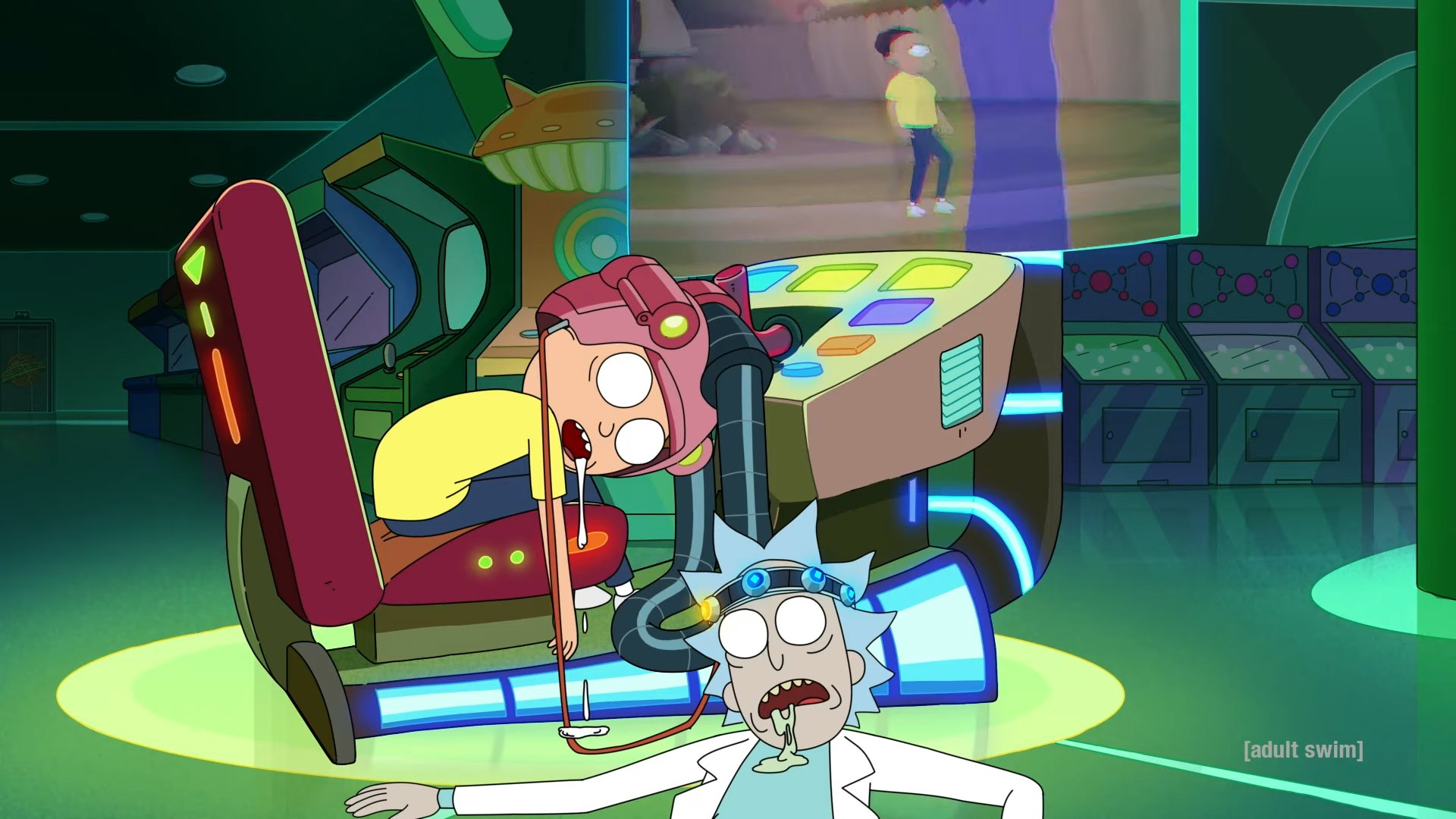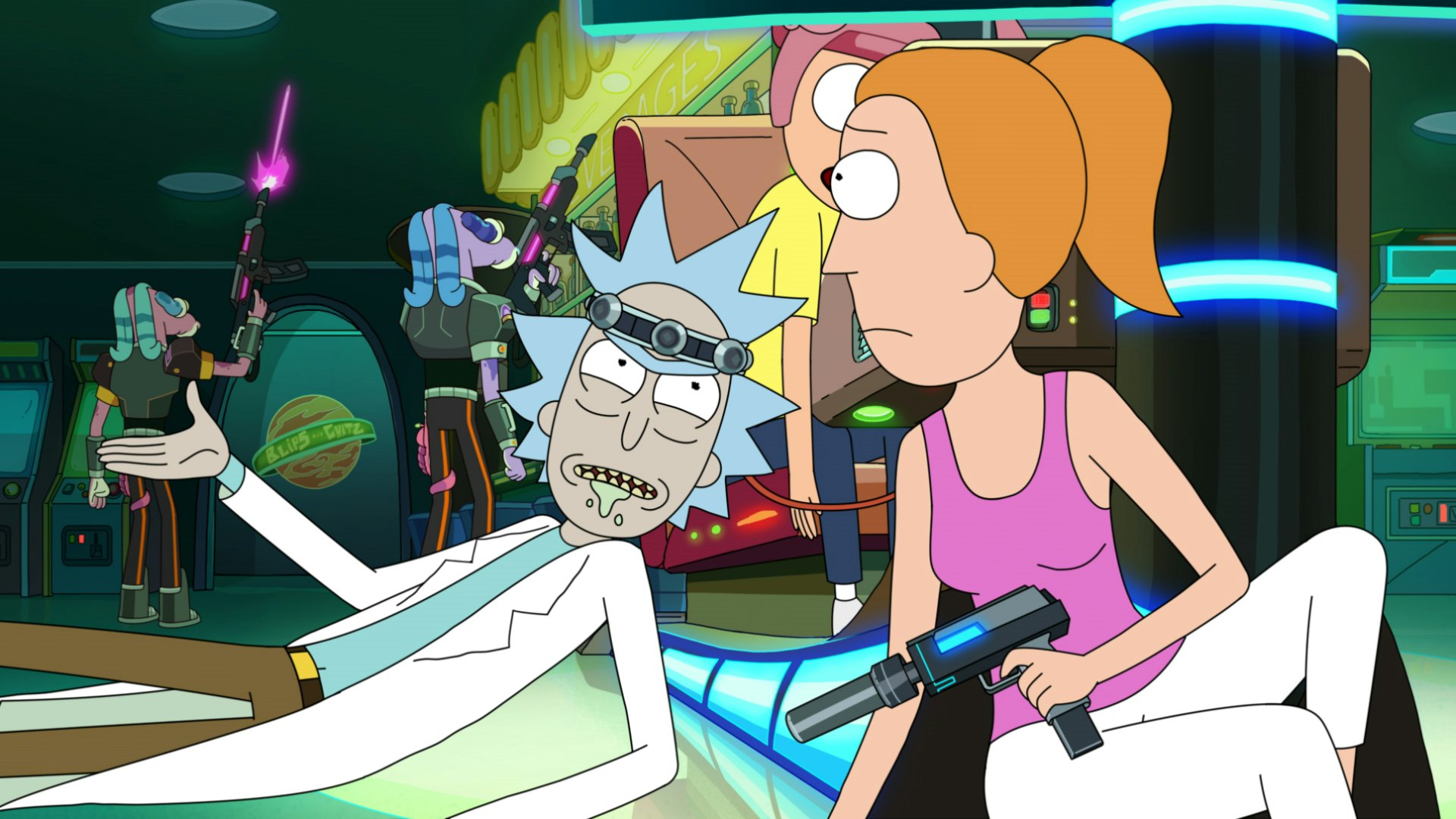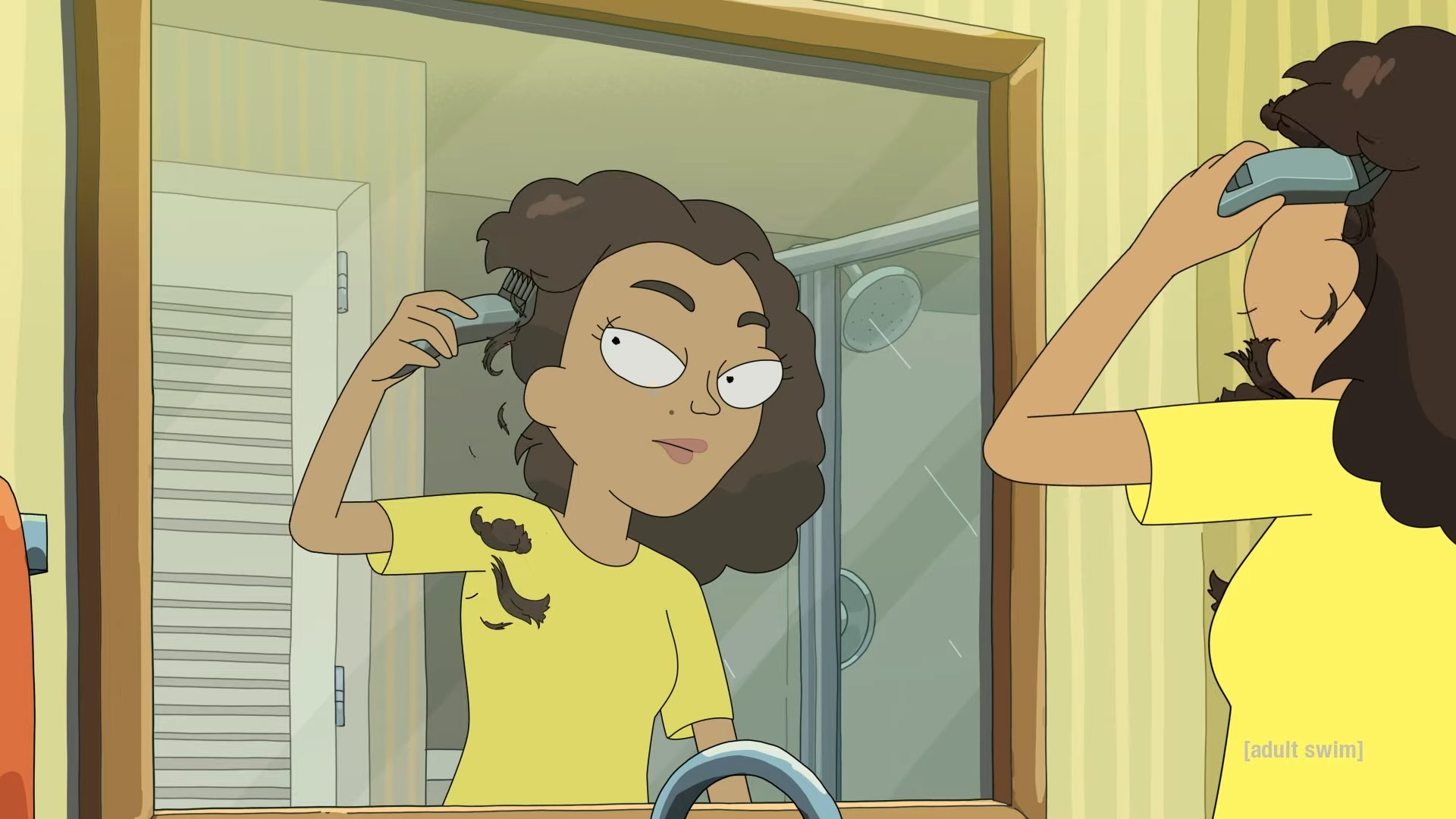
When Cypher vigorously chews a mouthful of chateaubriand steak in The Matrix, he makes a point about how the simulation that most humans exist in is — more often than not — a far more enjoyable experience than what reality has to offer. “Ignorance is bliss,” he muses. The steak is not real, but his enjoyment is.
Rick and Morty Season 6, Episode 2 “Rick: A Mort Well Lived” tackles similar questions about miserable reality vs. a simpler simulation when Morty’s consciousness is fractured into a video game and Rick has to get him out. The episode’s final moments make us wonder if the “real world” is even worth it. Everyone is a tiny speck in the multiverse whether it’s a simulation or not, right?
Roy: A Life Well Lived

Adult Swim aired the new episode Sunday night, and it brought us back to the intergalactic arcade Blips and Chitz. The location was first introduced in Season 2’s “Mortynight Run” and briefly featured in Season 4’s “Never Ricking Morty.” It’s best remembered as the place where Morty and Rick play Roy: A Life Well Lived, a VR life simulator in which the player spends an entire lifetime as everyman Roy Parsons.
Morty is at the arcade with Rick and Summer playing the game when alien terrorists attack it. In the mayhem that ensues, the power briefly goes out, causing the game to reset which splinters Morty’s consciousness into the more than 5 billion NPCs (non-player characters) that populate Roy’s virtual world. To save Morty, Rick enters the game as Roy with the ultimate plan of flying every NPC beyond the game’s borders in outer space, which will, in theory, trigger another reset.
Rick and Morty enter the Matrix

Every single NPC within Roy: A Life Well Lived is a tiny fraction of Morty without knowing it, and they all speak in a slight variation on Justin Roiland’s typical Morty voice. Imagine their shock and awe when Rick (playing as Roy) explains the truth to as many people as possible. “So am I your grandson?” people ask over and over. The answer is always a resounding — and frustrated — yes. Double frustrating to Rick is how everyone thinks that Roy is selling them on a cult or religion, which is a running bit the episode presents many times over.
“You guys keep thinking I'm a religious leader,” Rick says. “This isn't a religion! This is actual truth! I'm a scientist in real life, but this isn't real life, this is a video game.” Later, when his followers start writing songs about his message, he clarifies, “While I do have a message from a world beyond this one, and I do need the entire world to hear my message, what I do not need is any more songs about it.” The irony is plain to see here: Actual cult leaders and religious figures also claim to preach objective truths about existence.
What comes to be known as “grandsonism” makes it clear that there is virtually no difference between a cult, a religion, and a peculiar fractured existence within a video game simulation. The mainstream media labels the movement a “doomsday cult” and a soldier calls the followers “the wrong kind of religious.” Somebody even calls Roy “some kind of pope.” Rick and Morty has often repeated the sentiment that one single life is meaningless in the grand scope of the multiverse. The show inherently doubles down on that a billionfold here in new and interesting ways.
The episode ultimately asks big questions about how we reconcile objective and subjective truths about our existence. Is it more ridiculous to trust the words of a single man as gospel or to ignore objective truth? How do we define meaning in our lives? When you’re just a tiny fraction of a real person, how can you ever hope to grasp the scope of it all? And is being an NPC in Roy really so different than being a regular person on the real planet Earth?

The vast majority of Morty NPCs are about as dumb as Morty himself, but one young Jewish girl named Marta plays a major role in converting 92 percent of the world to Rick’s cause. If the overarching A-plot is a meditation on the meaninglessness of existence with Roy as its prophet, then Marta is the humanist heart of it all. It is one thing to be told the truth, and it is another to have faith.
Eventually, Marta tries to hold Rick accountable for his own motives. Does he even love Morty at all? Why does he even care so much? It’s a classic Morty-Rick fight that leads to a planet-wide conflict between the NPCs who are ready to be reabsorbed into Morty’s consciousness and those who prefer to live out their own lives.
After decades of fighting (or minutes in the real world thanks to time dilation), Marta realizes a fundamental truth about human beings in general, whether or not they’re a fraction of a Morty: Most of us yearn for a more simplified existence, so we surrender to authority figures and grand social structures to guide our behavior.
“My people are staying only out of loyalty to me,” she admits. “I'm a relic. I don't represent them anymore.” Their loyalty says more about their lack of existential curiosity than it does a sense of genuine humanity. That’s not a “bad” thing per se, but it does make Marta lose faith in the cause.
For series co-creator Dan Harmon, “Rick: A Mort Well Lived” represented a chance to explore the bizarre overlap between religion and simulation theory in a way only Rick and Morty can.
“I got really excited about that idea because it’s simultaneously an almost possible to grasp simulation theory while simultaneously being a really perfect model for almost any organized religions,” Harmon says in an Inside the Episode clip. “They all come back to this idea that we don’t have to worry about whatever we think our little tiny scripted jam is because we are all part of some larger thing with a bigger destiny. And the way that intersects with simulation theory, of course, is that the bigger destiny might be that you are a 14-year-old kid whose toast is burning. You may be rushing to atone with an impersonal cosmos for no reason. You may have a better gig as unenlightened tripe in someone else’s fractured amusement.”
Like Marta realizes in the end, feeling like a tiny fraction of a “real” person can be more meaningful than reuniting with the cosmos if you truly believe in it. That’s why she somehow rigs the Roy machine up so she can live forever in the simulation even after everyone else leaves. Belief is more powerful than truth, and that is a realization that renders simulation theory totally pointless — especially when a single Jewish girl that isn’t even real can figure our how to transcend her existence to become functionally immortal.
Rick and Morty airs Sunday nights on Adult Swim.







